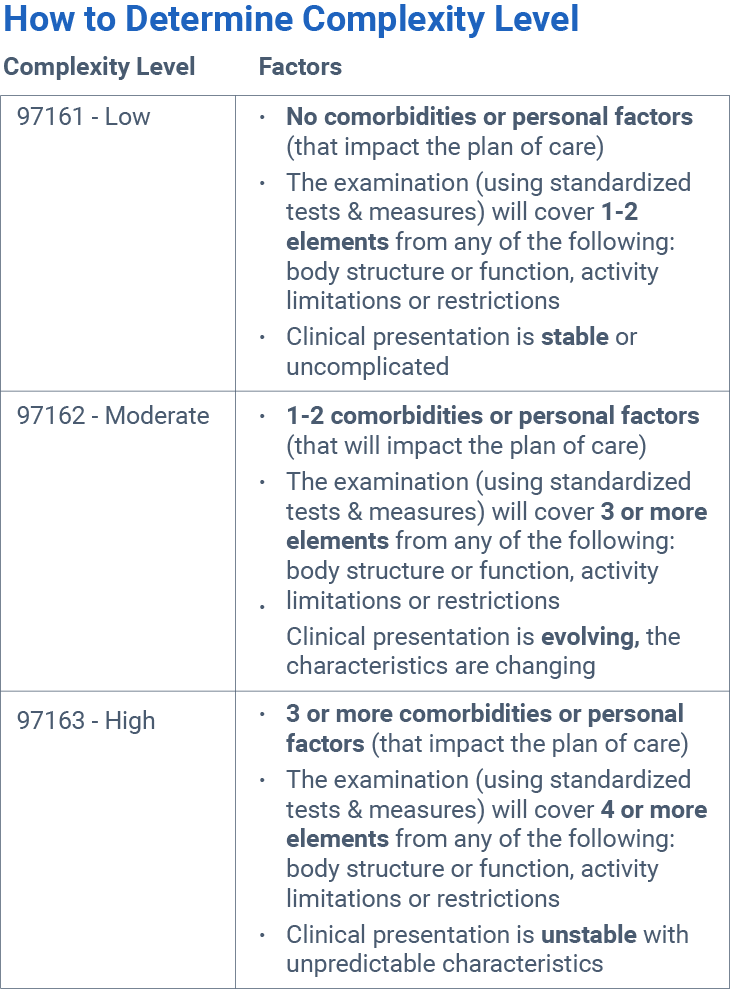New CPT Evaluation Codes for 2017: What You Need to Know

Know the basics and want to jump right in with case examples? Start our free course on the New CPT Evaluation Codes for Physical Therapy 2017 today.
It’s almost time to say goodbye to the current evaluation code, 97001, and say hello to a trifecta of new codes: 97161, 97162, and 97163 (low, moderate, high complexities – respectively). The new code descriptors do not change the evaluative process. Instead, they will support therapists in accurately identifying the level of complexity of the evaluation, and the degree of clinical decision making required based on an individual patient’s presentation. To avoid any denials or other problems getting paid, begin using the new codes on January 1, 2017.
How Will You Demonstrate Complexity?
The new codes are not timed codes. It doesn’t matter how long it takes to evaluate the patient (though the codes do note a “typical time” it might take for each level). This means it comes down to the patients themselves. The following questions will help determine complexity:
- What comorbidities do they have?
- Are there personal factors that complicate their plan of care?
- How does their injury or impairment restrict their everyday life?
These are the factors that you’ll capture in your documentation. To select the proper code there is a certain threshold of elements that have to be present to help you in determining complexity level. Here is a quick rundown of what that looks like:
It’s important to note that all of the factors are required for each level. If one of the categories falls short you’ll default to the lower complexity level regardless of the other factors of the evaluation. You could have a patient with 5 or 6 comorbidities, but if their clinical presentation is stable or uncomplicated, it’s still going to be a low complexity evaluation.
Case Example
Now that you know the basics, let’s try a case example:
Our patient is a 41-year-old female with a 3-year history of intermittent lower back pain. Over the past 2 months, the pain frequency has increased to almost daily.
- BMI is 33, with no other comorbidities
- Fluctuating pain from 3 to 9 on a scale of 10, currently at a 7 out of 10
- Oswestry 35: work as a daycare provider is interrupted at least once a week due to lower back pain, and she is unable to stand more than 5 minutes.
- Sleep varies but is impacted 3 out of 5 nights during the week
Here’s what you’ll need to document:
How would you code this evaluation?
Answer: This evaluation would receive the CPT code 97162 for a moderate complexity evaluation




